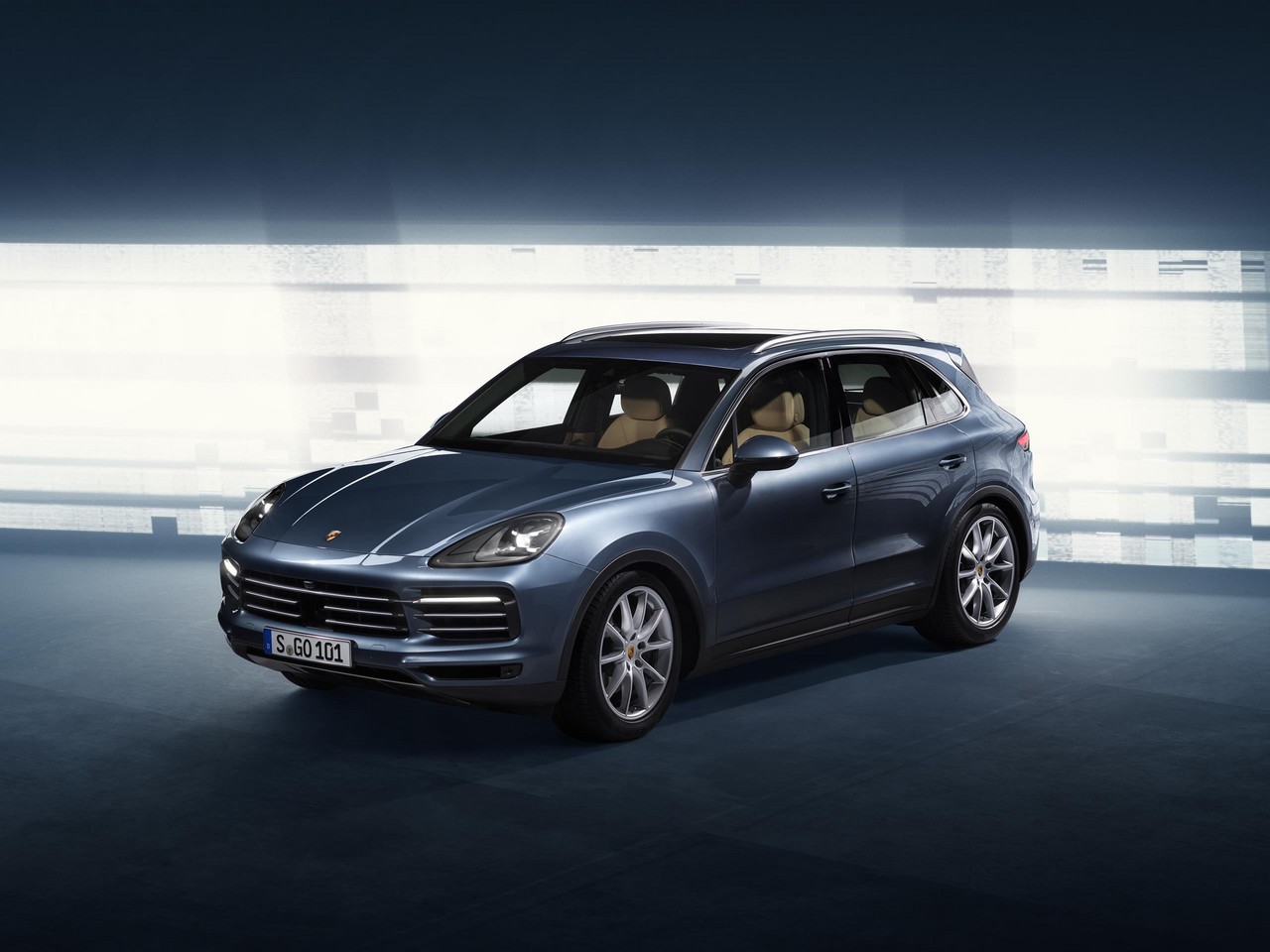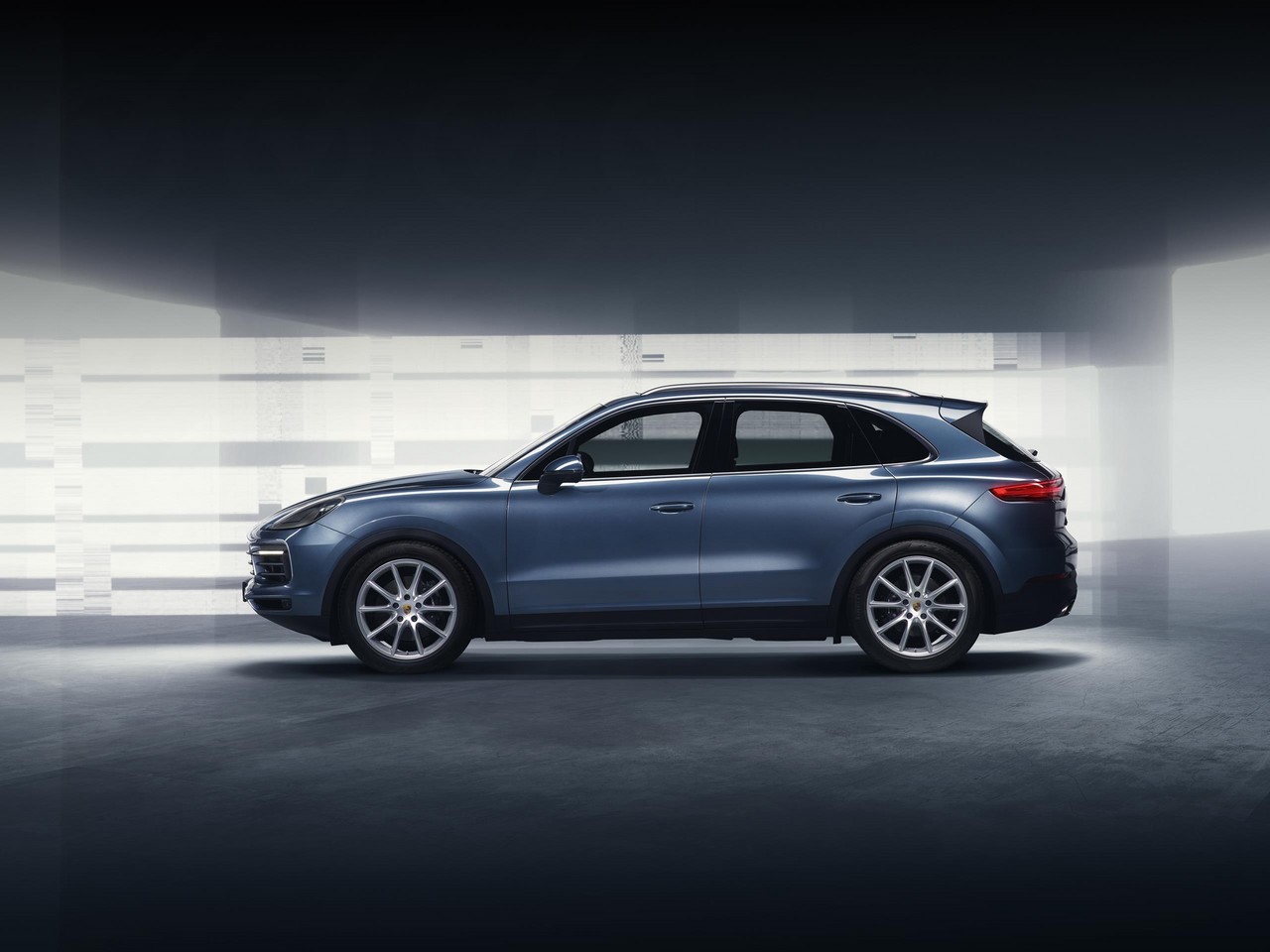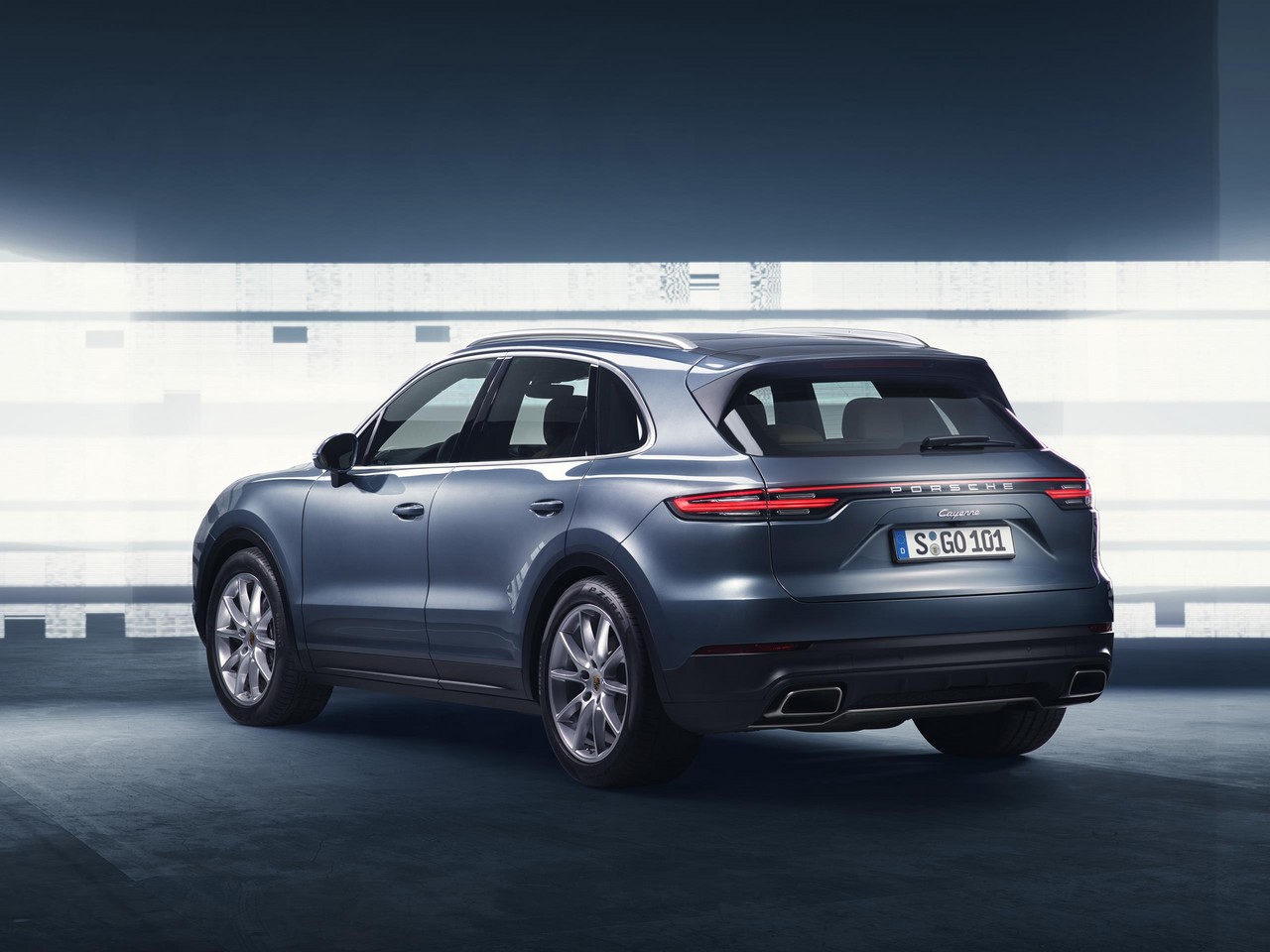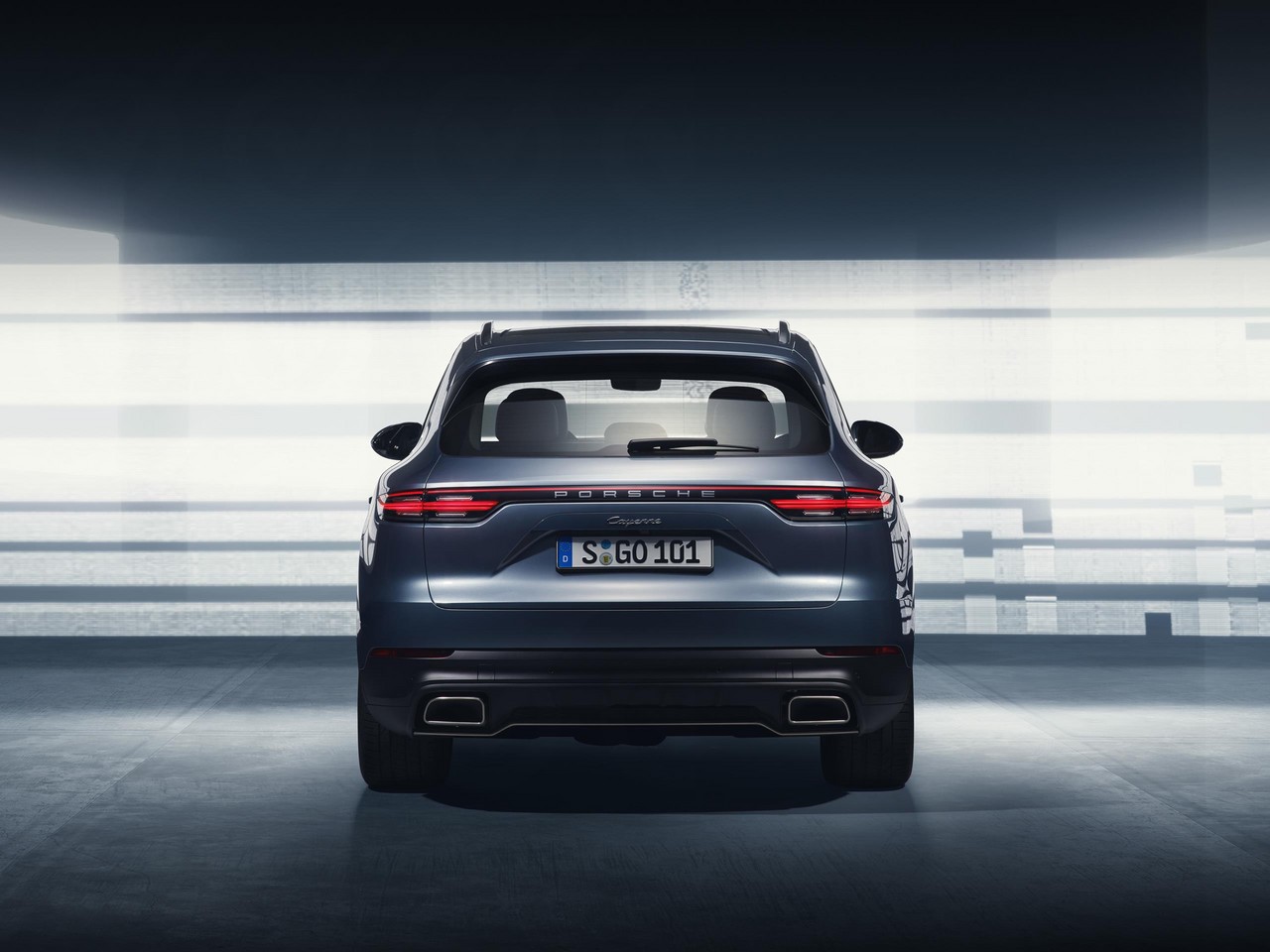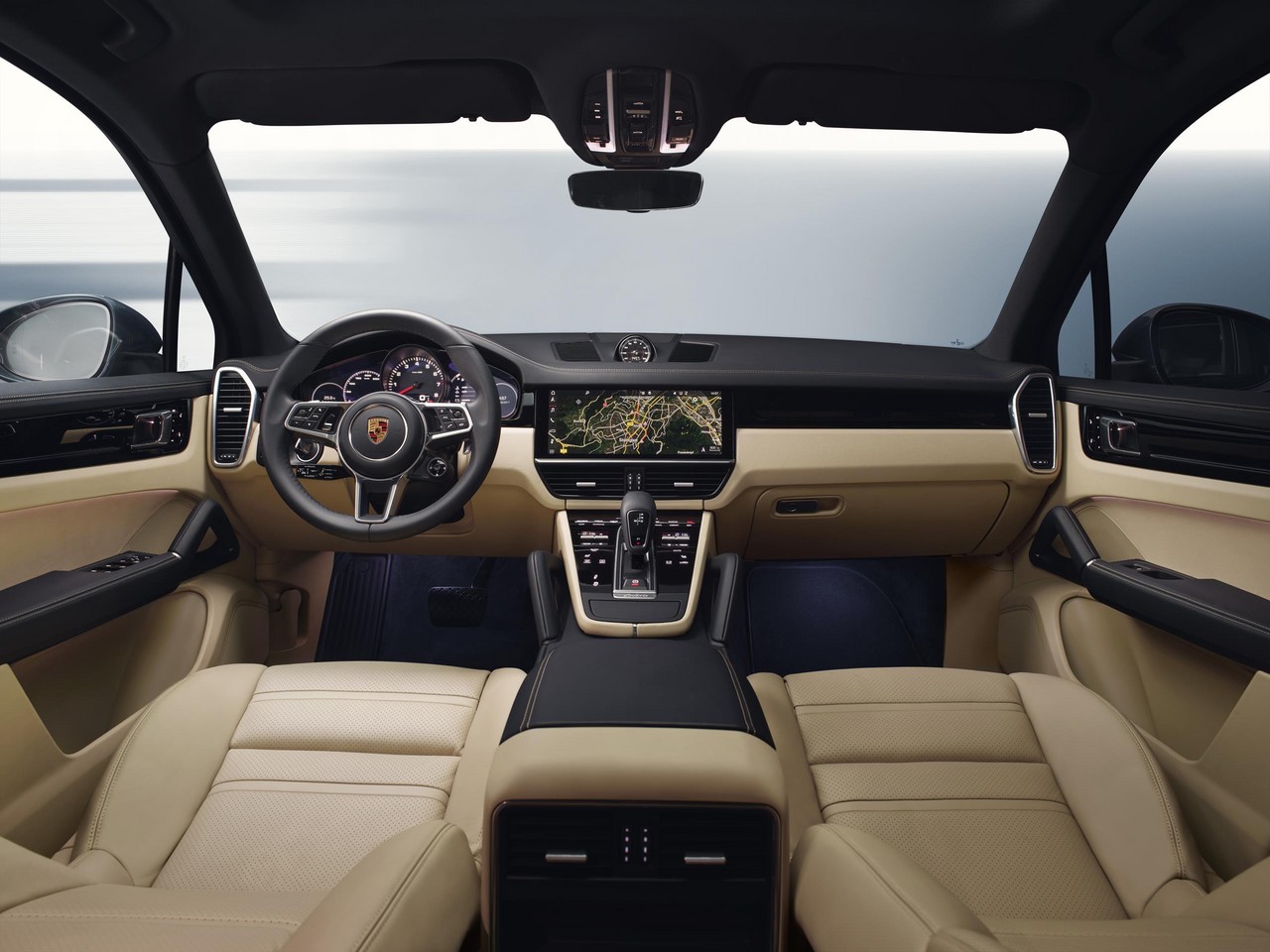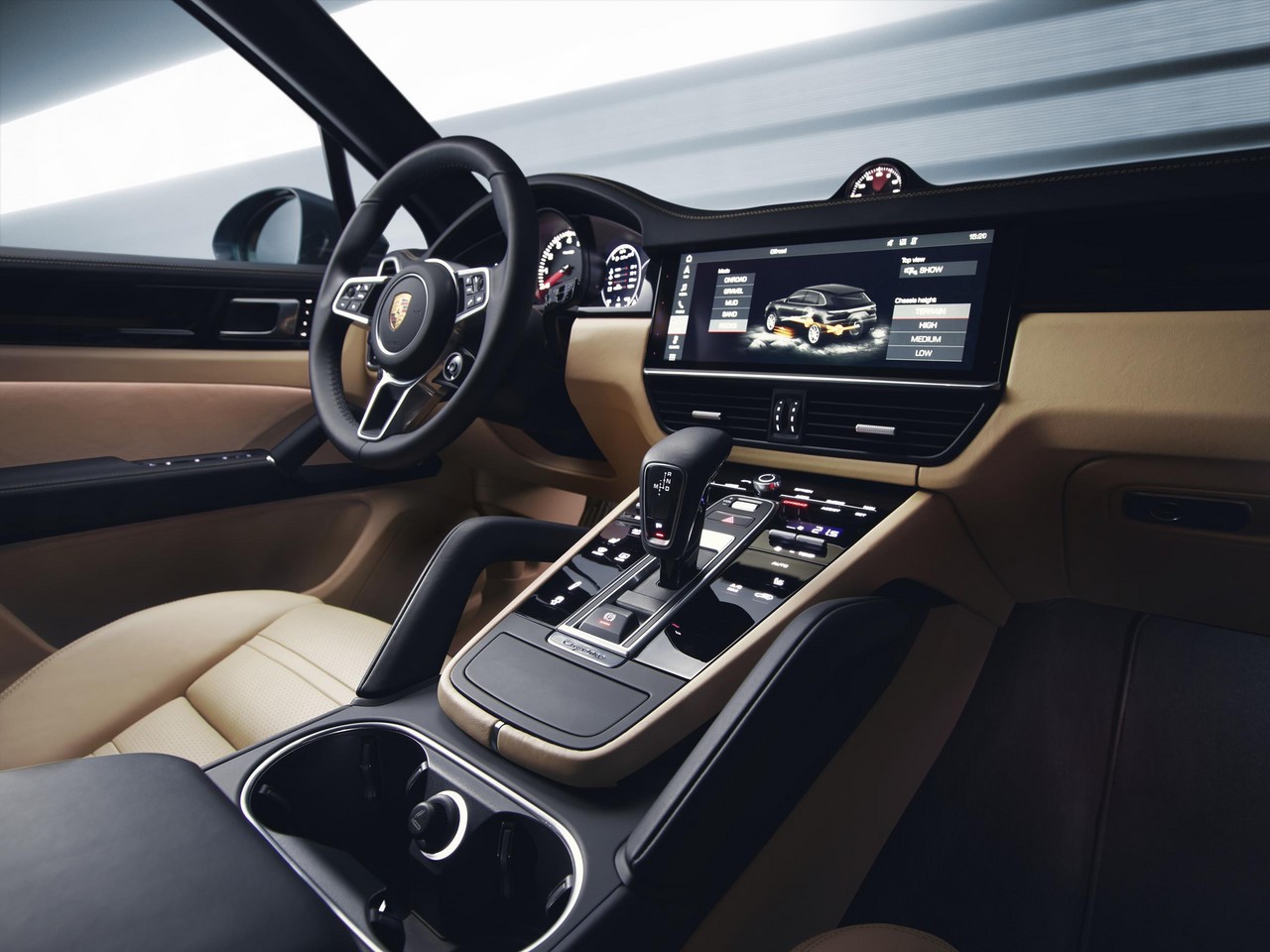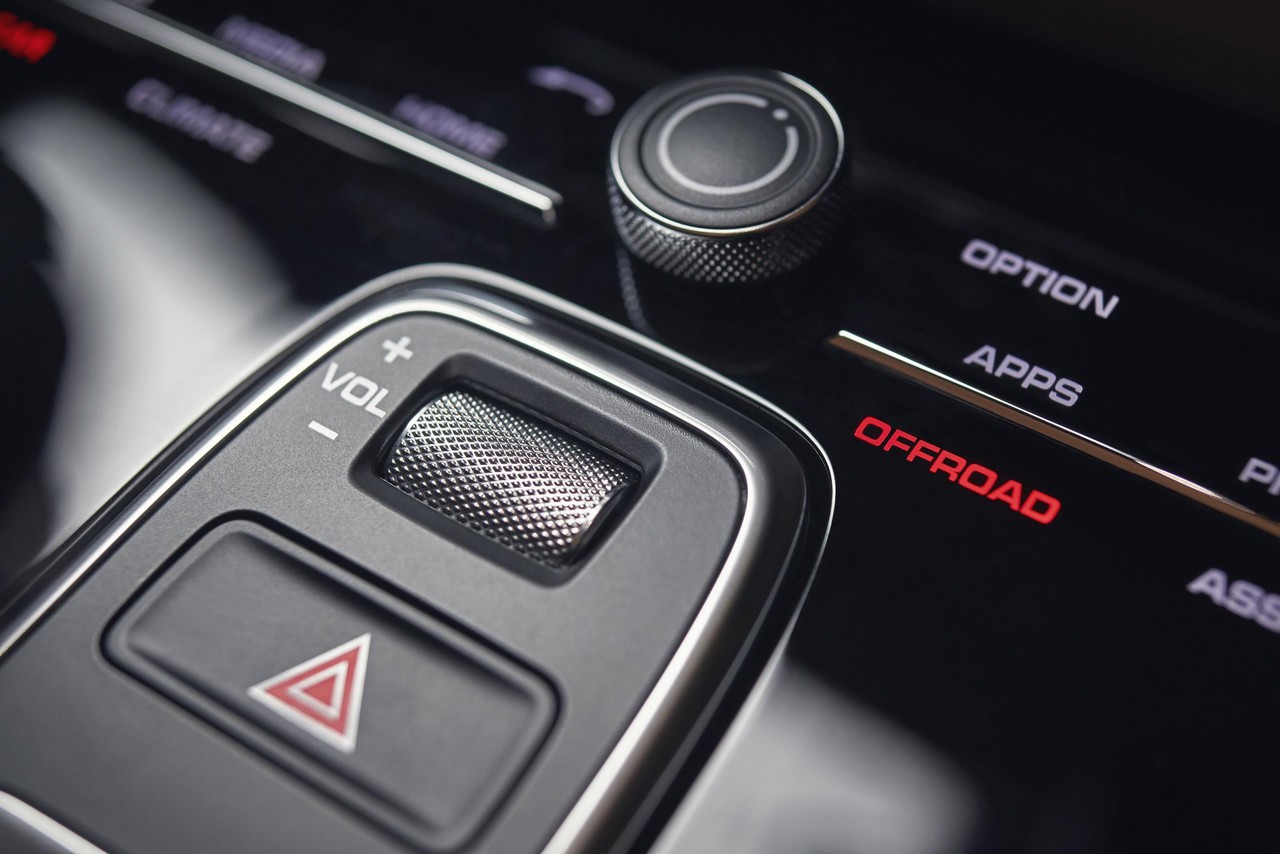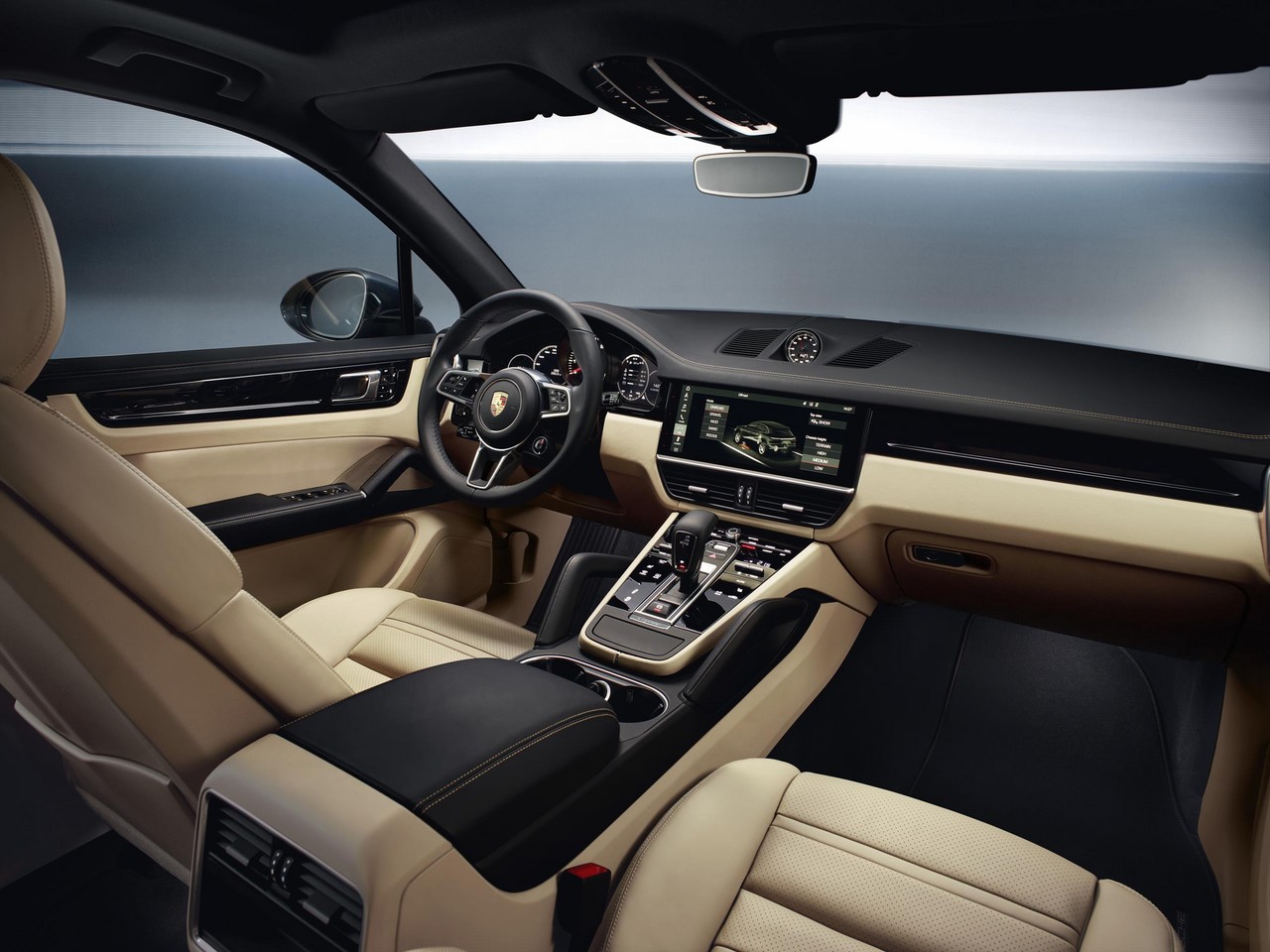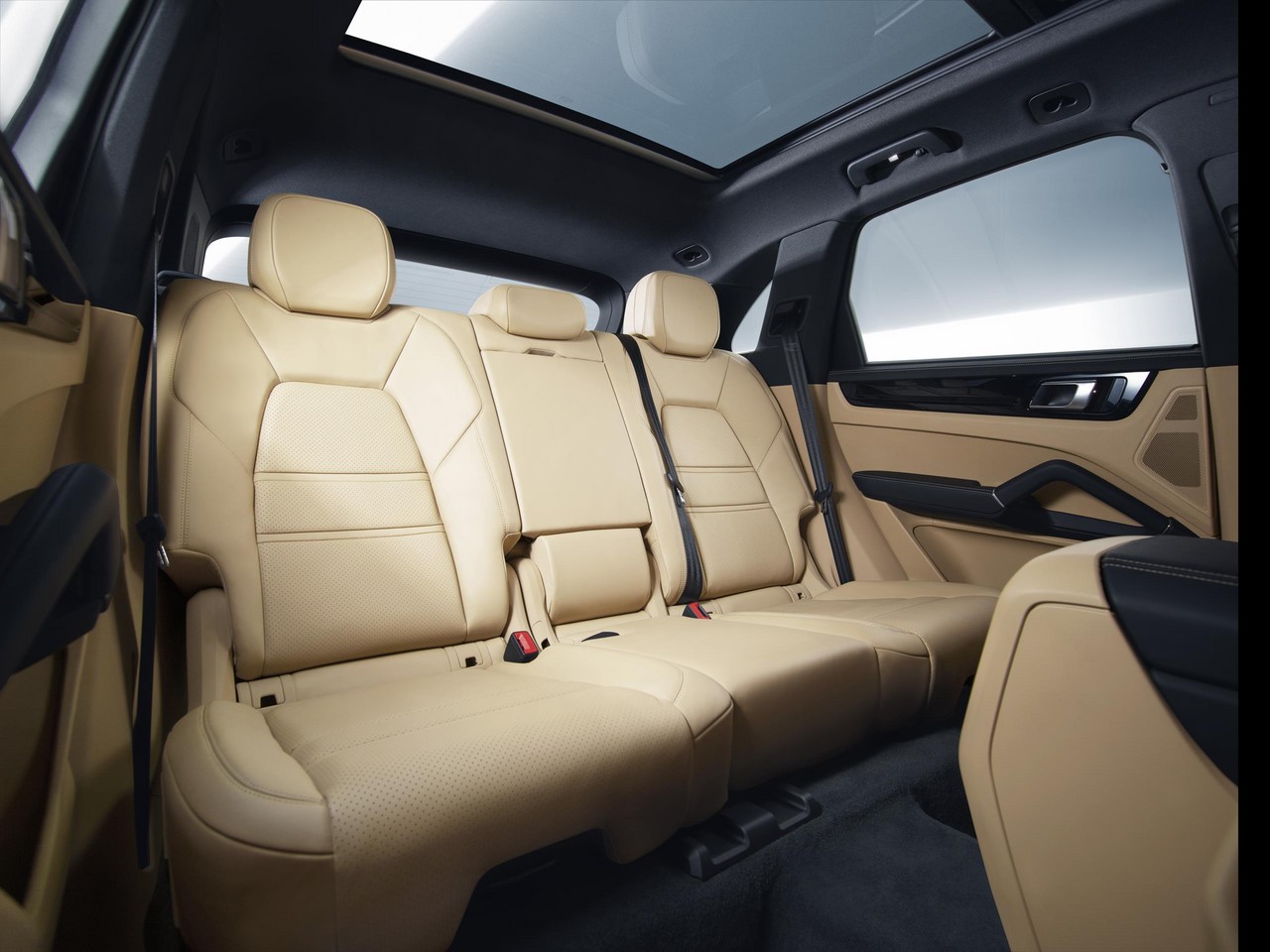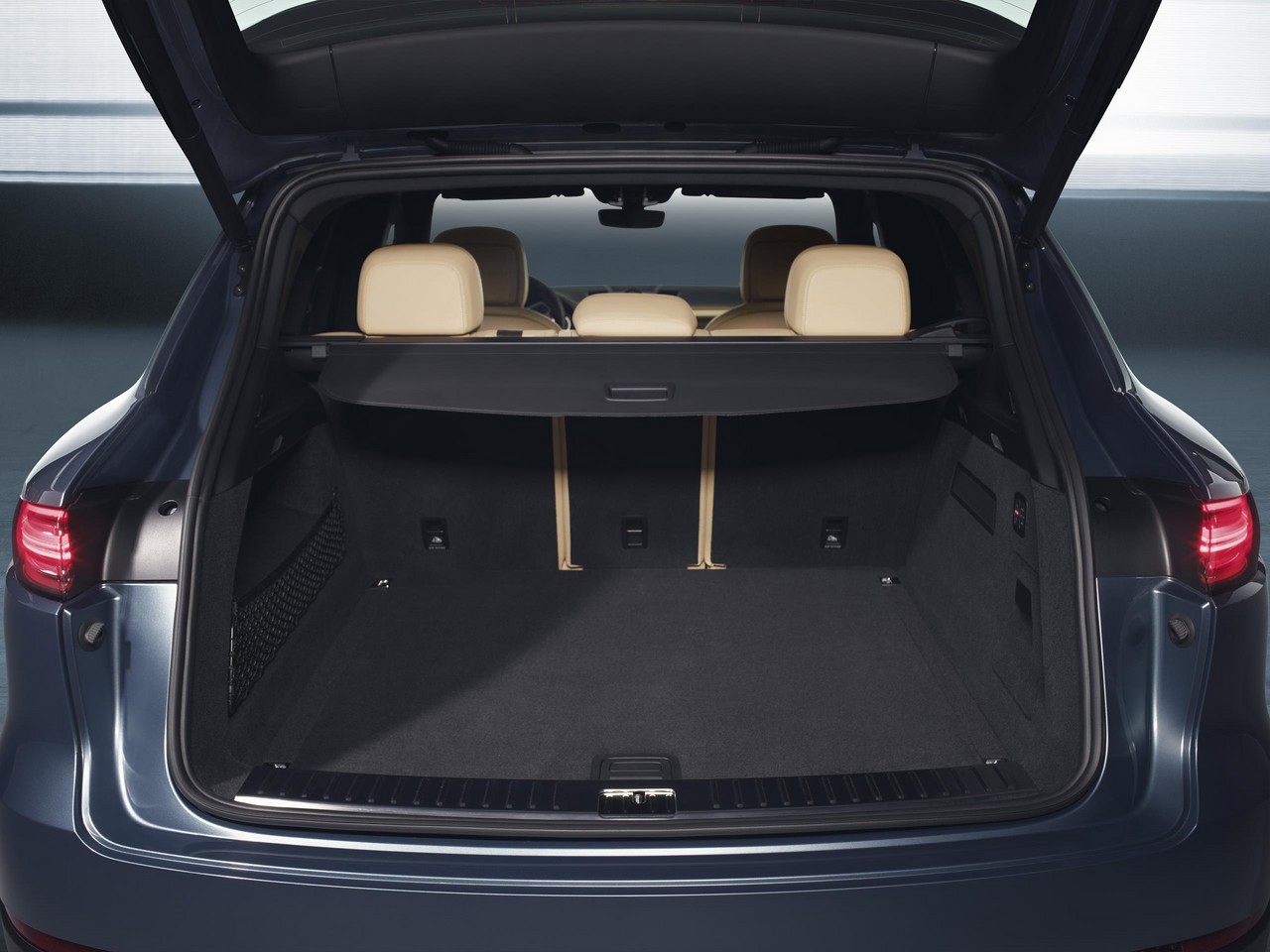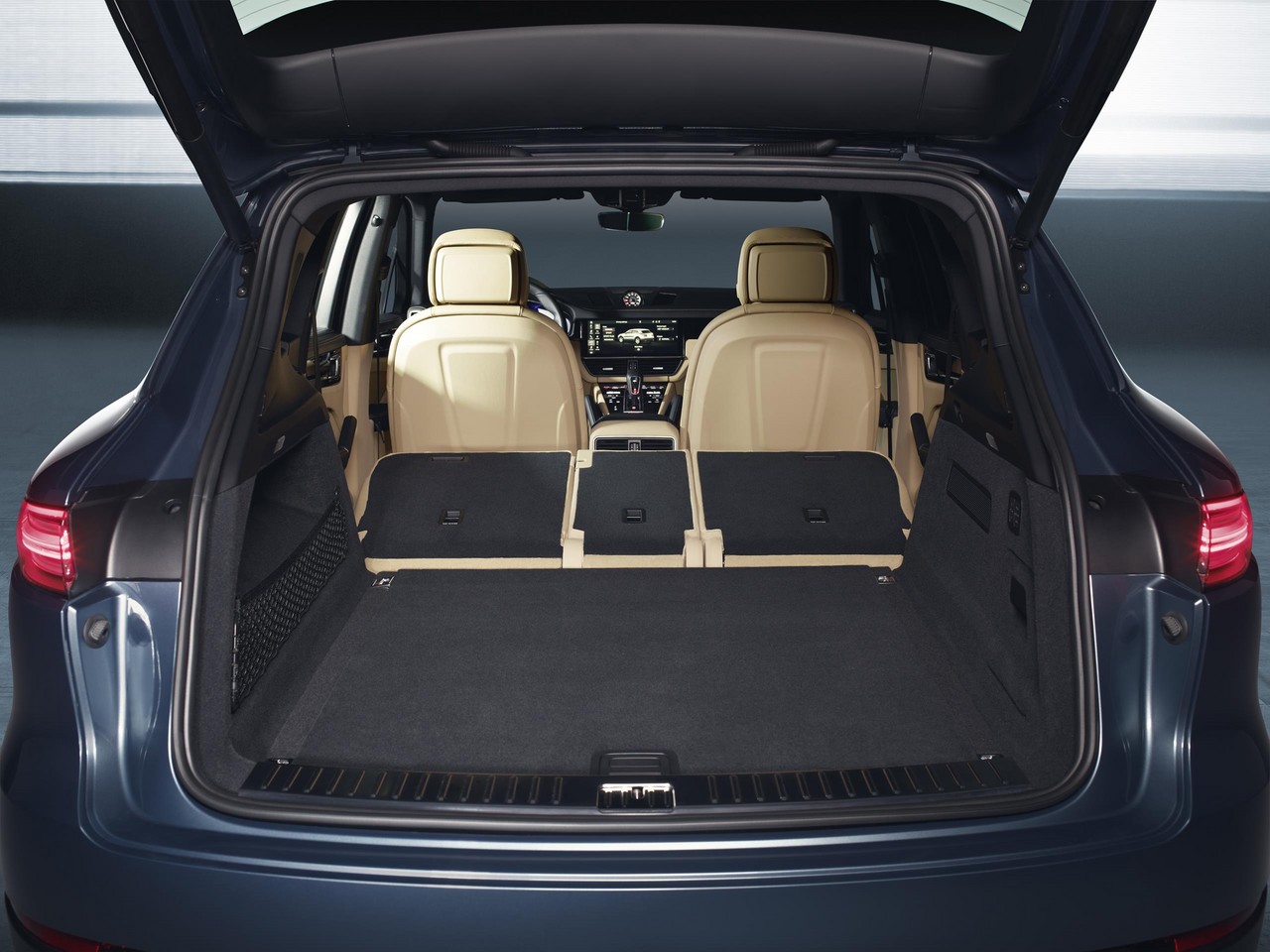
- Responsive turbocharged petrol engines
- Refined eight-speed ZF transmissions
- High standard of interior fit and finish
- Quiet, well-insulated cabin
- Class-leading handling…
- … though, to be picky, suspension lacks low-speed compliance
- Steering doesn’t provide feel and feedback of Mk.2 Cayenne
- Price premium and lack of active safety technologies relative to related Audi 4M Q7
- Purists will never accept it as a ‘real’ Porsche
Overview
Production of the third-generation Porsche ‘9YA’ or ‘E3’ Cayenne commenced in in Bratislava, Slovakia, in August 2017 and it was released in Australia in June 2018. A large SUV, the Porsche E3 Cayenne range initially consisted of standard, S and Turbo variants which were powered by 3.0-litre turbo V6, 2.9-litre biturbo V6 and 4.0-litre biturbo V8 petrol engines, respectively, that were mated to eight-speed ZF automatic transmissions (though branded as Porsche’s ‘Tiptronic S’). Australian deliveries of the Porsche Cayenne E-Hybrid commenced in the third quarter of 2018.
To reduce fuel consumption, all engines had:
- A start-stop system which could shut down the engine when the vehicle was stationary; and,
- A coasting function which could decouple the driveline from the engine to prevent engine braking and thereby reduce fuel consumption.
| Engine | Trans. | Peak power | Peak torque | |
|---|---|---|---|---|
| Cayenne | 2995 cc turbo petrol V6 | 8sp auto | 250 kW at 5300-6400 rpm | 450 Nm at 1340-5300 rpm |
| Cayenne S | 2894 cc biturbo petrol V6 | 8sp auto | 324 kW at 5700-6600 rpm | 550 Nm at 1800-5500 rpm |
| Cayenne Turbo | 3996 cc biturbo petrol V8 | 8sp auto | 404 kW at 5750-6000 rpm | 770 Nm at 1960-4500 rpm |
| Cayenne E-Hybrid | 2995 cc turbo petrol V6 | 8sp auto | 250 kW at 5300-6400 rpm | 450 Nm at 1340-5300 rpm |
| Electric motor | 100 kW | 400 Nm | ||
| Combined | 340 kW at 5300-6400 rpm | 700 Nm at 1340-5300 rpm | ||
All-wheel drive system
As standard, the Porsche E3 Cayenne had an active all-wheel drive with an electronically variable, map-controlled multi-plate clutch for variable torque distribution between the front and rear axles. As such, there was no pre-determined torque split and the Porsche Traction Management (PTM) system continually monitored driving conditions. If, for example, the rear wheels started to spin when accelerating, the multi-plate clutch would engage to direct more power to the front wheels. When cornering, the delivery of power to the front wheels was also monitored for lateral stability. The all-wheel drive system also included an automatic brake differential which, if the driven wheels began to spin, would brake the wheel with the higher level of slip.
While the E3 Cayenne had a default ‘Onroad’ program, the driver could also select from four off-road modes for different surfaces: Mud, Gravel, Sand or Rocks.
Body and dimensions
The Porsche E3 Cayenne was underpinned by Volkswagen AG’s ‘MLB evo’ platform which was shared with the Audi 4M Q7 and Bentley Bentayga . Compared to the Porsche Mk.2 Cayenne , the Porsche E3 Cayenne was 63 mm longer (at 4918 mm), 44 mm wider (1983 mm) and 9 mm lower (1696 mm), though wheelbase length was unchanged at 2895 mm. Furthermore, the E3 Cayenne had a drag co-efficient of 0.34 Cd and a frontal area of 2.83 m2. Inside, the E3 Cayenne had a luggage compartment volume of 770 litres with the rear seats in position, an increase of 100 litres relative to its predecessor. With the rear seats folded down and luggage filled to the roofline, luggage capacity was 1710 litres.
The body of the Porsche E3 Cayenne used a combination of aluminium alloys and steel. Specifically, the floorpan assembly, front section and ‘virtually all the chassis components’ are also manufactured from aluminium alloys. Furthermore, all exterior body panels (i.e. the bonnet, front wings, side panels, doors, roof and tailgate) were made of aluminium and the lithium-ion polymer starter battery achieved a mass reduction of 10 kg. In combination, the E3 Cayenne was 55 kg lighter than its Mk.2 predecessor and the standard E3 Cayenne had an unladen mass of 1985 kg.
Suspension
The Porsche E3 Cayenne had aluminium multi-link suspension front and rear. As standard, the Porsche Cayenne had steel springs with passive shock absorbers. Fitted as standard for Australian deliveries, Porsche’s Active Suspension Management Technology (PASM) consisted of continuously adjustable shock absorbers and a pair of accelerometers. Furthermore, PASM enables the driver to select from drive modes which also adjusted engine mapping, steering assistance and transmission behaviour.
In addition to PASM, the Porsche Cayenne Turbo – as standard – was fitted with:
- Adaptive three-chamber air suspension; and,
- Porsche Dynamic Chassis Control (PDCC) which consisted of active anti-roll bars that responded to steering angle and lateral acceleration to provide a stabilising force and reduce body roll. While PDCC had previously been a hydraulic system, the introduction of a 48 volt electrical system enabled electronic control of the anti-roll bars for faster response times.
Steering
The Porsche E3 Cayenne had rack-and-pinion steering with electric power assistance. Furthermore, the steering had a ratio of 13.3:1 from the centre position and provided a turning circle of 12.1 metres (diameter).
As an option, the E3 Cayenne could be specified with rear axle steering. At low speeds, the rear wheels would turn in the opposite direction to the front wheels to improve manoeuvrability; at high speeds, the wheels would turn in the same direction to increase stability. With rear axle steering, the Mk.3 Cayenne had a steering ratio of 12.2:1 from the centre position and the minimum turning circle was 11.5 metres (diameter).
Safety equipment
Standard safety equipment for the Porsche Cayenne included dual front airbags, dual front knee airbags, front side airbags, full-length curtain airbags, ABS, electronic brake force distribution, electronic stability control, traction control, trailer sway control, front and outer rear seatbelts with pre-tensioners and front seatbelt load limiters.
As standard, the Porsche Cayenne was fitted with:
- Warn and Brake Assist: used the front radar sensors and camera to detect collision risks with cars, pedestrians or cyclists. Initially, the driver would receive visual and acoustic warnings. In its second stage, the brakes would be applied for a ‘jolting’ effect. If the driver failed to respond, autonomous emergency braking (AEB) would be initiated to reduce vehicle speed;
- Lane Change Assist: operating at speeds from 15 km/h to 250 km/h, Lane Change Assist used a radar to monitor traffic in adjacent lanes up to 70 metres behind the Cayenne and would warn the driver of approaching traffic by illuminating LEDs in the corresponding door mirror; and,
- Multi-collision brake: following a collision, the brakes would be applied for controlled deceleration to reduce the likelihood and severity of subsequent collisions. The multi-collision brake function, however, could be over-ridden by the driver.
As standard, the Porsche E3 Cayenne was fitted with an ‘active bonnet’ which had pyrotechnic actuators in the bonnet hinges. In the event of a pedestrian collision, the actuators would deploy and locks would keep the bonnet in a raised position to provide additional deformation space between the bonnet and hard structures beneath it.
As an extra-cost option, the Porsche E3 Cayenne could be specified with:
- Adaptive Cruise Control including Emergency Stop Function: operating at speeds from 30 km/h to 210 km/h, Adaptive Cruise Control could control the Cayenne’s speed and distance from other vehicles. The stop-and-go function enables the Cayenne to brake until stationary and automatically accelerate if the vehicle had been stationary for less than three seconds; for longer periods, the accelerator would need to be depressed to initiate acceleration. Adaptive Cruise Control also included an autonomous emergency braking function;
- Lane Keeping Assist: active at speeds from 65 km/h to 250 km/h, Lane Keeping Assist used a forward-facing camera to monitor the Cayenne’s position within its lane. In the event that the Cayenne was about to depart from its lane without indicating, corrective steering inputs would be applied to return the vehicle to the centre of its lane and the driver was alerted via steering wheel pulsations; and,
- Night Vision Assistant: used an infrared imaging camera to detect people and large animals up to 300 metres ahead, and displayed a colour highlighted warning indicator in the cockpit.
Euro NCAP testing
In Euro NCAP testing , the 2017 Porsche Cayenne received a five star safety rating which included a 95 per cent adult occupant protection rating, an 80 per cent child occupant protection rating and a 62 per cent ‘safety assist’ rating. In the frontal offset test, protection of the driver’s head, thighs and feet were rated as good, though chest and lower leg protection was rated as adequate (i.e. a slight risk of serious injury). Maximum points were awarded in the side impact test; in the more severe pole test, however, protection of the driver’s chest was rated as adequate.
Wheels, tyres and brakes
To improve stability and driving dynamics when cornering, the Porsche E3 Cayenne was fitted with mixed tyres. For brakes,
- The standard Cayenne had 350 mm by 34 mm ventilated front brake discs with four-piston monobloc fixed callipers and 330 mm by 26 mm ventilated rear discs with two-piston monobloc fixed callipers;
- The Cayenne E-Hybrid had 350 mm by 36 mm ventilated front brake discs with four-piston monobloc fixed callipers and 358 mm by 28 mm ventilated rear discs with two-piston monobloc fixed callipers;
- The Cayenne S has 390 mm by 38 mm ventilated front brake discs with six-piston monobloc fixed callipers and 330 mm by 28 mm ventilated rear discs with four-piston monobloc fixed calipers; and,
- The Cayenne Turbo had 415 mm by 40 mm ventilated front brake discs with ten-piston monobloc fixed callipers and 365 mm by 28 mm ventilated rear discs with four-piston monobloc fixed callipers.
Fitted as standard for the Cayenne Turbo and available for other variants in combination with 21-inch wheels, the cast-iron brake discs could be specified with a newly developed tungsten-bide coating. Called Porsche Surface Coated Brake (PSCB), the coating increased friction while reducing disc wear and brake dust. The Porsche E3 Cayenne could also be specified with Porsche Ceramic Composite Brakes (PCCM).
Features: Porsche E3 Cayenne and Cayenne E-Hybrid
Standard features for the Porsche Mk.3 Cayenne included the Porsche Communication Management (PCM 4.1) system which had a 12.3-inch full-HD touchscreen, ‘Porsche Connect Plus’ for online satellite navigation with real-time traffic information, a SIM card reader, Wi-Fi hotspot, Bluetooth mobile phone connectivity, voice control, Apple Car Play smartphone integration. As standard, the Porsche Cayenne had a 150 watt hi-fi sound system with ten speakers and a digital radio tuner. For connectivity, the Porsche Cayenne had two USB charging and connectivity sockets in the centre console storage compartment, two USB charging sockets in the rear centre console and three 12 volt power sockets.
Beyond this, standard features for the Porsche Cayenne included fourteen-way power adjustable front seats with memory package, partial leather seats, dual-zone climate control air conditioning, cruise control, LED headlights with dusk-sensing function (Porsche’s ‘driving light assistant’), LED daytime running lights, rain-sensing wipers, front and rear parking sensors (Porsche’s ‘ParkAssist’) 40/20/40 split and folding rear seats, steering wheel gearshift paddles, remote central locking with proximity key, power adjustable and heated door mirrors with power folding, power windows, a height and reach adjustable steering wheel, auto-dimming interior and door mirrors, push-button start, illuminated vanity mirrors, rear privacy glass, an automatic tailgate, tyre pressure monitoring, a trip computer, an alarm and immobiliser.
The Porsche Cayenne was also equipped with Porsche’s Surround View, a surround view camera system which could provide a bird’s eye graphical representation of the vehicle on the central display screen and show the proximity of nearby obstacles.
Features: Porsche E3 Cayenne S
The Porsche Cayenne S was further equipped with a Bose surround sound system which had fourteen speakers (including subwoofer) and a total output of 710 watts, heated fronts seats and a panoramic sunroof.
The Cayenne S and Cayenne Turbo were also equipped with the ‘Porsche Dynamic Light System’ (PDLS) which provided a variety of light modes such as cornering light and motorway light. Beyond this, PDLS Plus provided fully variable light distribution and intensity since it used 84 individually activated LEDs – this enabled the light distribution to be partially masked or dimmed to avoid dazzling other drivers.
Features: Porsche E3 Cayenne Turbo
The Porsche Cayenne Turbo was distinguished by its Adaptive sports seats with eighteen-way power adjustment, ventilated front seats, heated rear seats, leather upholstery, four-zone climate control air conditioning and Alcantara roof lining.
Unique within the range, the Porsche Cayenne Turbo had an adaptive roof spoiler which could increase downforce on the rear axle and, in its ‘airbrake’ position, reduce braking distances from higher speeds. According to Porsche, the airbrake reduced the stopping distance by two (2) metres, if applying full braking from 250 km/h.
